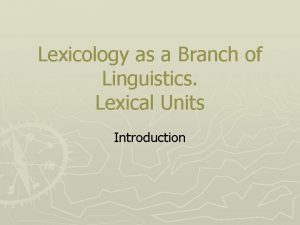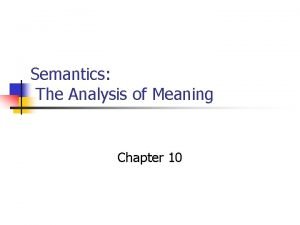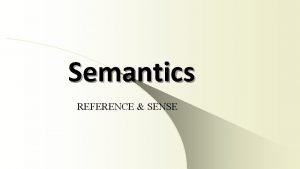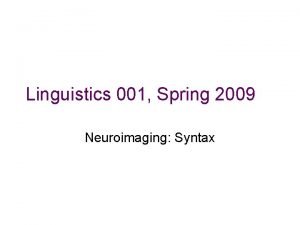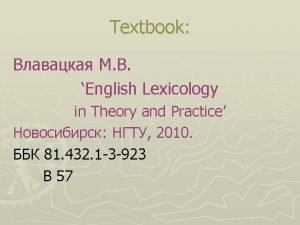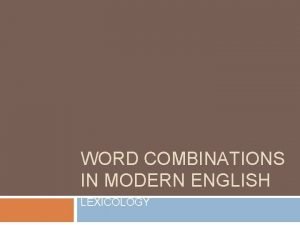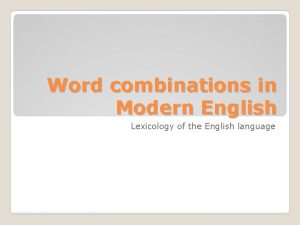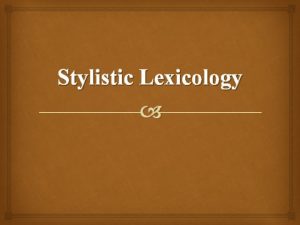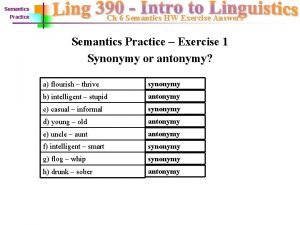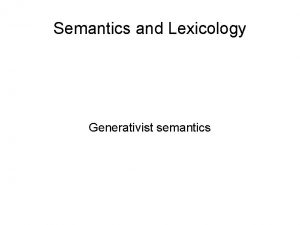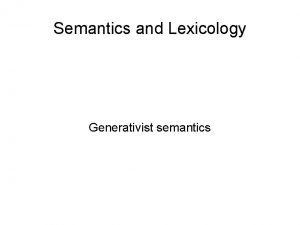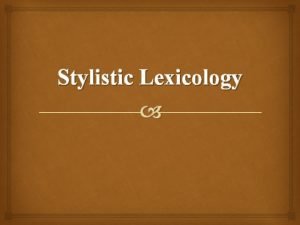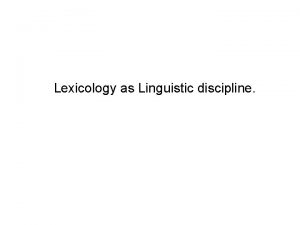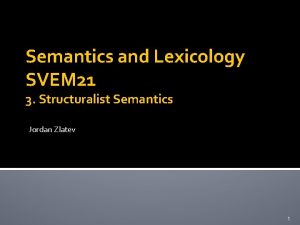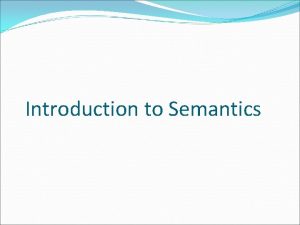Semantics and Lexicology Historicalphilological semantics Historicalcomparative linguistics Discovery














- Slides: 14

Semantics and Lexicology Historical-philological semantics

Historical-comparative linguistics Discovery and questions Continuity and change Earlier traditions of language description Types of change of meaning Psychological and social perspectives

Discovery and questions Languages can be historically (”genetically”) related. Which are the sounds, and which are the roots, stems and endings? Which types of changes have occurred?

Continuity and change Minor changes in recognizable elements give discoverable continuity ”Life and growth” of languages ”Sound laws” Changes of meaning

Earlier traditions of language description Etymology: speculation Lexicography: polysemy Rhetoric: metaphor, metonymy, euphemism Philology: linguistic and world knowledge useful for interpretation of classical works

Types of change of meaning Change of denotation Change of connotation Transfer of lexical pattern Meaning and naming

Change of denotation Metaphor Metonymy Generalization Specialization

Change of connotation Pejorative and ameliorative Euphemism and dysphemism Hyperbole and litotes

Transfer of lexical pattern Between languages Within a language

Naming concepts and interpreting expressions Semasiological questions: Which senses can an expression have? How does an expression acquire a new sense? Onomasiological questions: How is a concept named or expressed? How and why are new expressions invented and used?

Carnoy and Stern Carnoy: regular and singular meaning changes Stern: changes due to linguistic or language external causes

How, why and where do changes occur? In the minds of people? In linguistic communities? In conversation?

Do those who speak a certain language also think in a certain way, using the concepts of that language? Herder Humboldt Wundt (Sapir, Whorf. . . )

Psychological and social perspectives Bréal: psychological perspective, Essais de sémantique: science des significations, 1897 Paul: usuelle und okkasionelle Bedeutung, meaning in norm for usage and in context of use Meillet: sociological perspective Wegener: pragmatic perspective
 Descriptive lexicology
Descriptive lexicology Traditional linguistics and modern linguistics
Traditional linguistics and modern linguistics Difference between linguistics and applied linguistics
Difference between linguistics and applied linguistics Hyponymy adalah
Hyponymy adalah Social meaning examples
Social meaning examples Meaning of semantics
Meaning of semantics Example of semantics in linguistics
Example of semantics in linguistics Compare procedural semantics and declarative semantics.
Compare procedural semantics and declarative semantics. Descriptive lexicology
Descriptive lexicology English lexicology theory and practice
English lexicology theory and practice Types of meaning
Types of meaning Free word combinations examples
Free word combinations examples Types of word combinations
Types of word combinations Stylistic synonyms lexicology
Stylistic synonyms lexicology Exercises on pragmatics
Exercises on pragmatics
